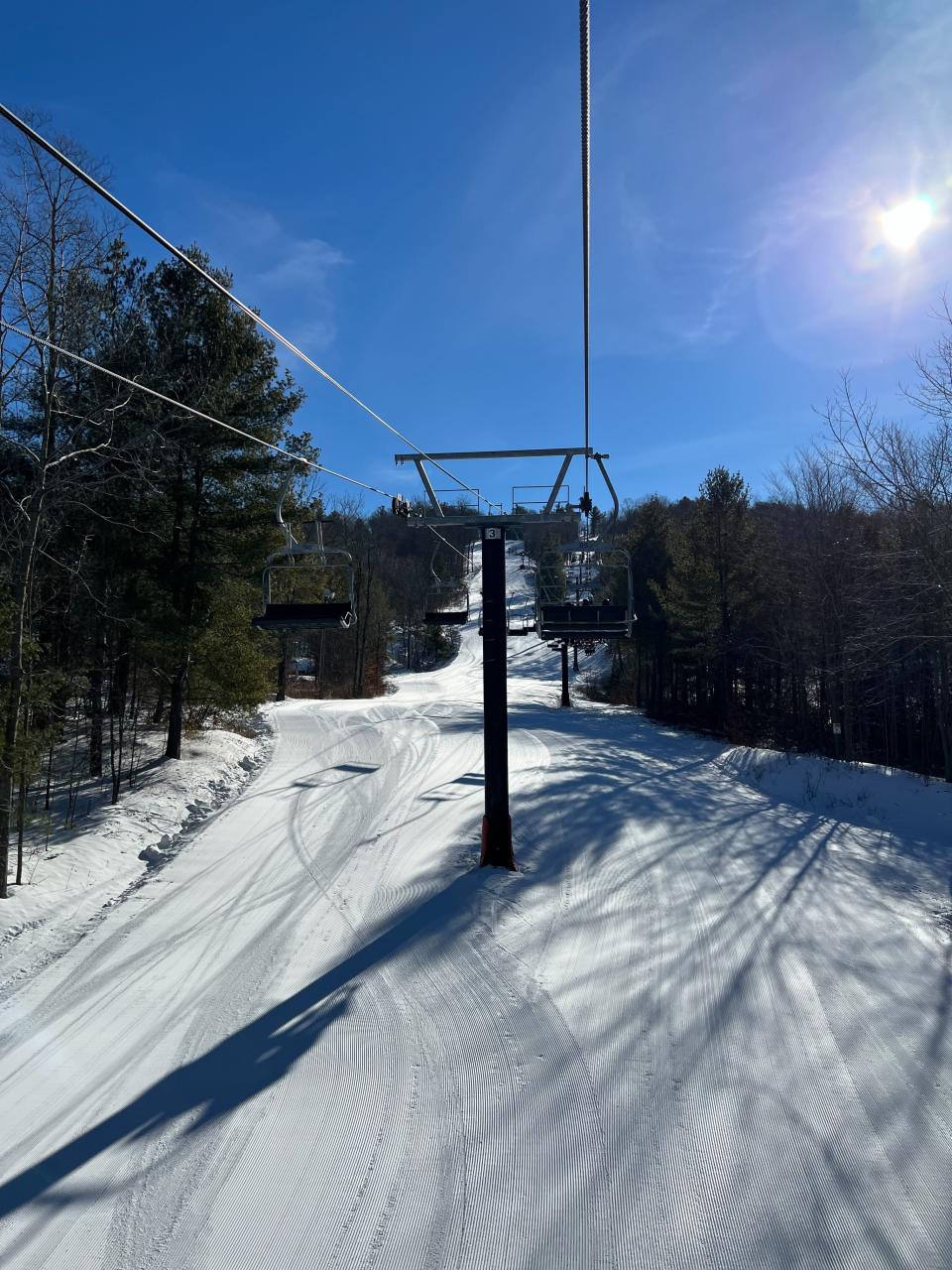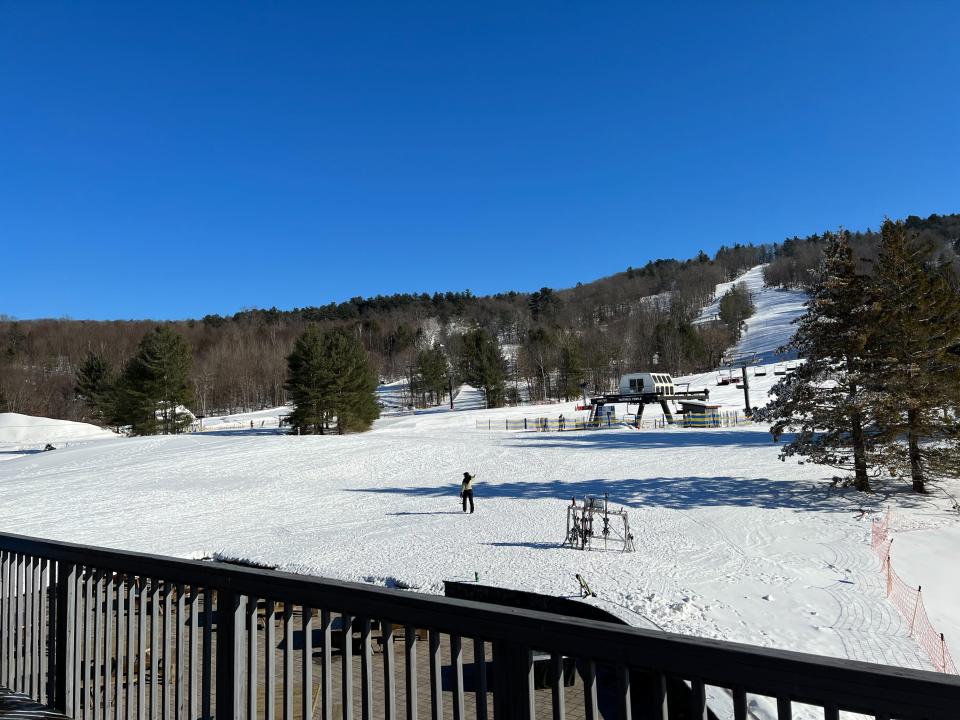On skiing: Mohawk Mountain 'a Vermont experience in Connecticut'
How many times have we seen massive snowstorms pound the coastal cities in the Northeast, burying Eastern Long Island and Cape Cod, and leaving ski country with barely a flake?
Winter Storm Kenan did just that last week, skirting the coastal regions and dropping no more than a few inches in the Taconics, Berkshires and Catskills with virtually nothing north of those areas.
At least it’s been cold and the snow guns have been firing nearly round the clock at all ski resorts in our area and throughout ski country. Ski areas are nearing their full complement of snowmaking terrain, leaving only natural snow trails remaining and those aren’t in great shape unless you head way up north.
Winter Storm Kenan did bring near hurricane force winds and when combined with bitter cold, ski area operators were forced to shut certain lifts and curtail night skiing last Saturday.
Last week: A deep freeze leads to the best conditions of the ski season so far

I skied at Mohawk, in Cornwall, Connecticut, last Thursday, before the storm, on a bluebird day. Temperatures were in the single digits when I pulled into the parking lot just before 10:00 a.m. The air was still and very dry so it didn’t feel nearly as cold as the thermometer reading.
I used my second free day that comes with the purchase of my Indy Pass and I had my Mohawk RFID lift card from my previous visit in mid-December. I’ll keep it for any more visits this season and in the future.
Mohawk was about 90% open with the last remaining trails getting pounded with the impressive snowmaking system’s snow cannons, which created “snow whales” that were up to 15 feet high in places. Mohawk has a trail network around the summit that is what you would find in the older ski areas of northern Vermont and New Hampshire. Trails like Ledges, Pinnacle, Housatonic and Rim Rock are narrow, only a snow cat in width, and wind through the woods until they spill out onto the broader slopes below.
There’s nothing particularly super challenging but the black-diamond-rated trails such as Timber, Chute, Wildwood and Route 100 have enough steep pitch over their length to make you work at carving precise turns — lest you let go and find yourself screaming out-of-control at an Olympic downhill speed.
The trails were all groomed immaculately and conditions held up beautifully the entire time I skied. Mohawk’s management also had all but one of their chairlifts operating so there was never a hint of a lift line and it in fact felt like a private ski resort.
I could sum up my visit as a Vermont experience in Connecticut.

Lessons require proper skis
I’m a big believer in getting ski lessons to help improve your skills but one thing that always bothered me was the type of skis you were using when taking a lesson. For example, if the instructor is on slalom skis and you’re on giant slalom skis, the performance difference is like night and day. I asked my “go-to” pro, Nick Pera, a PSIA Level III Instructor at Windham Mountain, to give me his thoughts on this conundrum.
Pera told me that with advanced manufacturing technology, modern skis have amazing performance attributes that were unthinkable just five to seven years ago. He said you have long skis that ski short and short skis that ski long, wide skis that carve like racing skis and on and on.
"What matters most is what type of skiing you plan to do,” Pera said.
Then, factors such as turning radius and width underfoot come into play. If you took the ski and turned it on its edge and followed the arc it would make to complete a circle, the distance from the edge of the circle to the center is the turning radius, measured in meters.
The bigger the radius, the greater the natural turn of the ski. The width underfoot is measured in millimeters (mm). For hard pack, icy, steep and narrow trails, you would want a carving ski that would have an 11-to-14-meter turning radius and be between 60 and 80 mm underfoot. The length of the ski will depend on the height and weight of the skier and generally fall into to 155 to 170 centimeter (cm) range.
An all-mountain ski is designed for hard pack and mixed snow. It would have a turning radius of 16 to 18 meters and be 80 to 90 mm underfoot. For mixed and powder snow like what you would experience in the western U.S. and where carving is not necessary, you would have a turning radius of from 17 to 19 meters and it would be 90 to 100 mm underfoot.
All-mountain skis would generally run 165 to 180 cm in length, again depending on skier height and weight. When you are in the 100 mm range underfoot, you are talking powder skis.
Pera said you will most likely find an eastern instructor on carving skis or a narrow waist all-mountain ski. Every day, instructors are faced with a variety of students with varying skill levels and different goals, like skiing bumps, steeps or carving, to name a few. In these instances, a student should consider bringing a pair of carving skis to the lesson. The greater sensitivity of a narrow waist, short radius turning ski allows for better feedback from the instructor when coached new skills or tasks. Pera said he finds it easier to make a short radius ski long than the other way around.
Pera suggests you should try before you buy! Many of the bigger ski resorts have demo programs where you can try different types of skis for a daily flat rate. Some ski areas will even apply the daily demo charge to the purchase price if you decide on a new pair.
Pera told me that Windham has an excellent demo program in a base facility between the “D” and “F” chairs and it’s expertly staffed with personnel that can match your desired skiing style and ability to a set of potential skis. This truly is the best way to find your perfect set of skis.
Think more natural snow and happy skiing and riding!
Albert S. Neubert is a freelancer writer. E-mail him at asneubert@aol.com or follow him on Instagram at @asneubert.
This article originally appeared on Times Herald-Record: Skiing at Mohawk Mountain like Vermont in Connecticut

